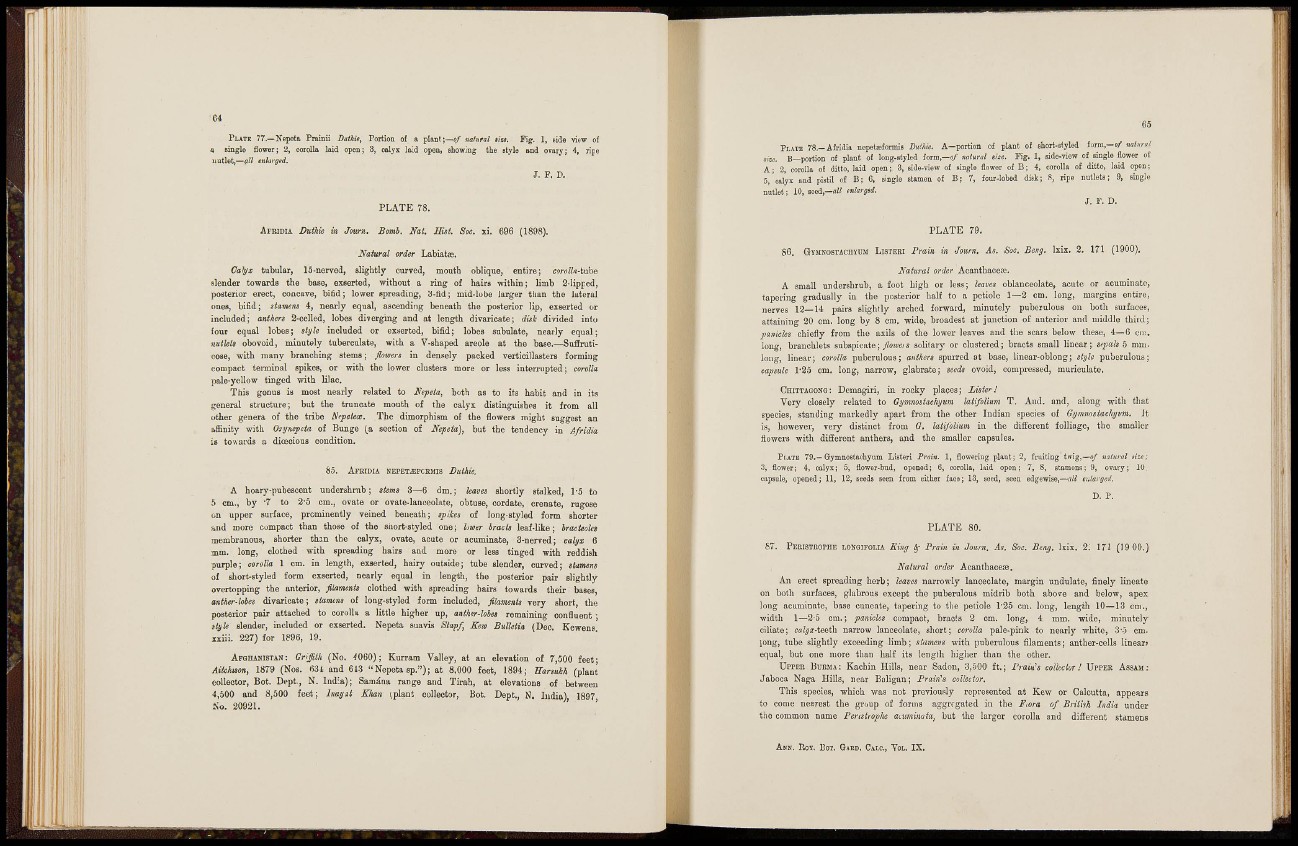
PLATE 77.—Nepeta Prainii Suthie, Portion of a plant;—0/ natural »!u. Pig. 1, fide view of
a single flower ; 2, corolla laid opec ; 3, calyx laid open, showing the etyle end o?ary j 1, ripe
uutlet,—gli enlarged.
J , F . D.
AFBIDIA Duthie in Journ. Bomb. Nat. Eist. Soc. xi. 696 (1898).
Natural order Labiatse.
Calyx tubular, 15-nerved, slightly curved, mouth oblique, entire; coroZii-tube
slender towards the base, exaerted, without a ring of hairs within; limb 2-lipped,
posterior erect, concave, bifid; lower spreading, 3-fid; mid-lobe larger than the lateral
ones, bifid; stamens 4, nearly equal, ascending beneath the posterior lip, exserted or
included; anthers 2-eelled, lobes diverging and at length divaricate; disk divided into
four equal lobes; style included or exserted, bifid; lobes subulate, nearly equal;
nutlets obovoid, minutely tuberculate, with a V-shaped areole at the base.—Suffruticose,
with many branching stems; flowers in densely packed verticillasters formiug
compact tei-minal spikes, or with the lower clusters more or less interrupted; corolla
pale-yellow tinged with lilac.
This gonus is most nearly related to Nej>eta, both as to its habit and in its
general structure; but the truncate mouth of the calyx distinguishes it from all
other genera of the tribe Nfpetecs. The dimorphism of the flowers might suggest an
affinity with Osynepcta of Bunge (^a section of Nepeta), but the tendency in Afridia
is towards a dioecious condition.
8 5 . AFEIDIA SEPETÁÍFCKJJIS Dulhie.
A hoary-pubescent undershrnb ; stems 3—6 dm.; haves shortly stalked, 1-5 to
5 cm., by '7 to 2-Ô cm., ovate or ovate-lanceolate, obtuse, cordate, crenate, rugose
on upper surface, prominently veined beneath; spikes of long-styled form shorter
and more compact than those of the siiort-styled one; hwer bracts leaf-like; hraeteoles
membranous, shorter than the calyx, ovate, acute or acuminate, S-nerved; calyx 6
mm. long, clothed with spreading hairs and more or less tinged with reddish
purple; corolla 1 cm. in length, exserted, hairy outside; tube slender, curved; stamens
of short-styled form exserted, nearly equal in length, the posterior pair slightly
overtopping the anterior, filaments clothed with spreading hairs towards their bases,
antker-lobes divaricate; stamens of long-styled form included, filaments very short, the
posterior pair attached to corolla a little higher up, anther-lobes remaining confluent ;
style slender, included or exserted. Nepeta suavis Stapf, Keio Bulletin (Dec. Kewens.
xxiii. 227) for 1896, 19.
AFGHANISTAX: Griffith (No. 4060); Kurram Valley, at an elevation of 7,500 feet;
Aitchmn, 1879 (Nos. and 643 " Nepeta sp.»); at 8,000 feet, 1894; Earsukk (plant
collector, Bot. Dept., N. India); Samán» range and Tirah, at elevations of between
4,500 and 8,500 feet; Inayat Khan \plant collector, Bot. Dept., N. India) 1897
No. 20921. ' '
PLATE 7 8 . - A f r i d i a nepetasfonnis BulMe. A—portion of plant of short-sfjled form,—o/ natural
the. B—portion of plant of long-styled form,—0/ natural site. Fig. 1, side-view of single flower of
A; 2, corolla of ditto, laid open; 3, side-view of single flower of B ; 4, corolla of ditto, laid open;
5, calyx and pistil of B; 6, single stamen of B-, 7, four-Iobed disk; 8, ripe nutlets; 9, single
nutlet; 10, seed,—flW enlargsd.
J . F. D.
P L A T E 79.
86. GYMNOSTACUYUM LISTERI Frain in Journ. As. Soc. Bong. Ixix. 2. 171 (1900).
Natural order Acantbaces.
A small undershrub, a foot high or less; leaves oblanceolate, acute or acuminate,
tapering gradually in the posterior halt to a petiole 1—2 cm. long, margins entii-e,
nerves 12—14 pairs slightly arched forward, minutely puberulous on botli surfaeee,
attaining 20 cm. long by 8 cm. wide, broadest at junction of anterior and middle third;
panicles chiefly from the axils of the lower leaves and the scars below these, 4—6 cm.
long, branchlets s u b s p i c a t e ; 5 solitary or clustered; bracts small linear; sfpals 5 mm.
long, linear; corolla puberulous; anthers spurred at base, linear-oblong; stylo puberulous;
capsule 1'25 cm. long, narrow, glabrate; seeds ovoid, compressed, muriculate.
CHITTAGONG: Demagiri, in rocky places; Lister!
Very closely related to Gymnostachyum latifolium T. And. and, along with that
species, standing markedly apart from the other Indian species of Gymnostachyvm. Jt
is, however, veiy distinct from G. latifolium in the different folliage, the smaller
flowers with different anthers, and the smaller capsules.
Pi.ATB 79.—Q-ymnostachyum Listeri Prain. 1, flowering plant; 2, fruiting twig,—o/" natural Mze;
3, flower; 4, calyx; 5, flower-bud, opened; 6, corolla, laid open; 7, 8, stamens; 9, ovary; 10
capsule, opened; 11, 12, seeds seen from either face; 13, seed, seen edgewise,—all enlarged.
87. PERISTEOPHE LONGIFOLIA Ring Prain in Journ. As. Soc. Beag. Ixix. 2. 171 (19 00.)
Natural order Acanthaceie.
An erect spreading herb; leaves narrowly lanceolate, margin undulate, finely lineate
on both surfaces, glabrous except the puberulous midrib both above and below, apex
long acuminate, base cuueate, tapering to the petiole 1'25 cm. long, length 10—13 cm.,
width 1—2-5 cm.; panicles compact, bracts 3 cm. long, 4 mm. wide, minutely
ciliate; cai!//a'-teeth nai-row lanceolate, short; corolla pale-pink to nearly white, 3--5 cm.
long, tube slightly exceeding limb; stamens with puberulous filaments; anther-cells linear»
equal, but one more than half its length higher than the other.
UPPER BURMA : Kachin Hills, near Sad on, 3,500 f t . ; Brainh collector.' UPPER ASSAM
Jaboca Naga Hills, near Baligan; Brain's collector.
This species, which was not previously represented at Kew or Calcutta, appears
to come neerest the group of forms aggregated in the Fiora of Briiiih India under
the common name Pcnstrophc a<.uminafa, but the larger corolla and different stamens
ANN, EOY, BOT. OAED, CALC., YOL. I S .